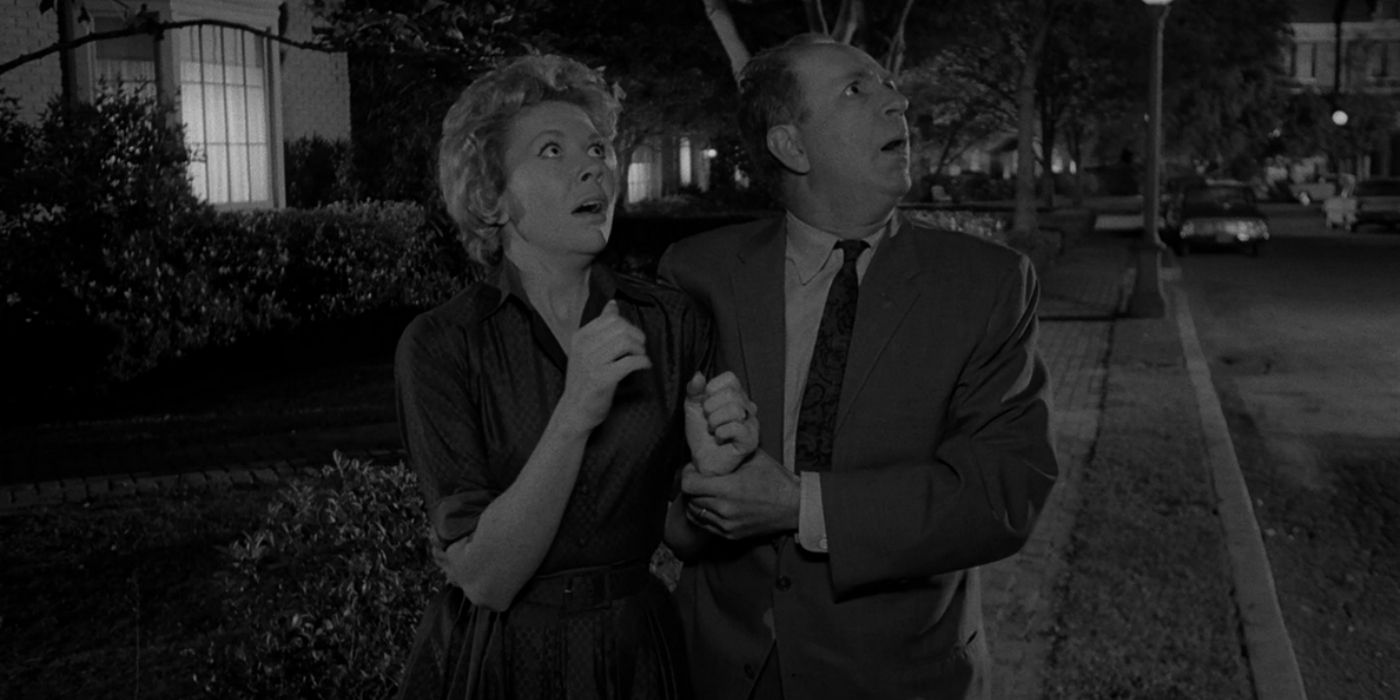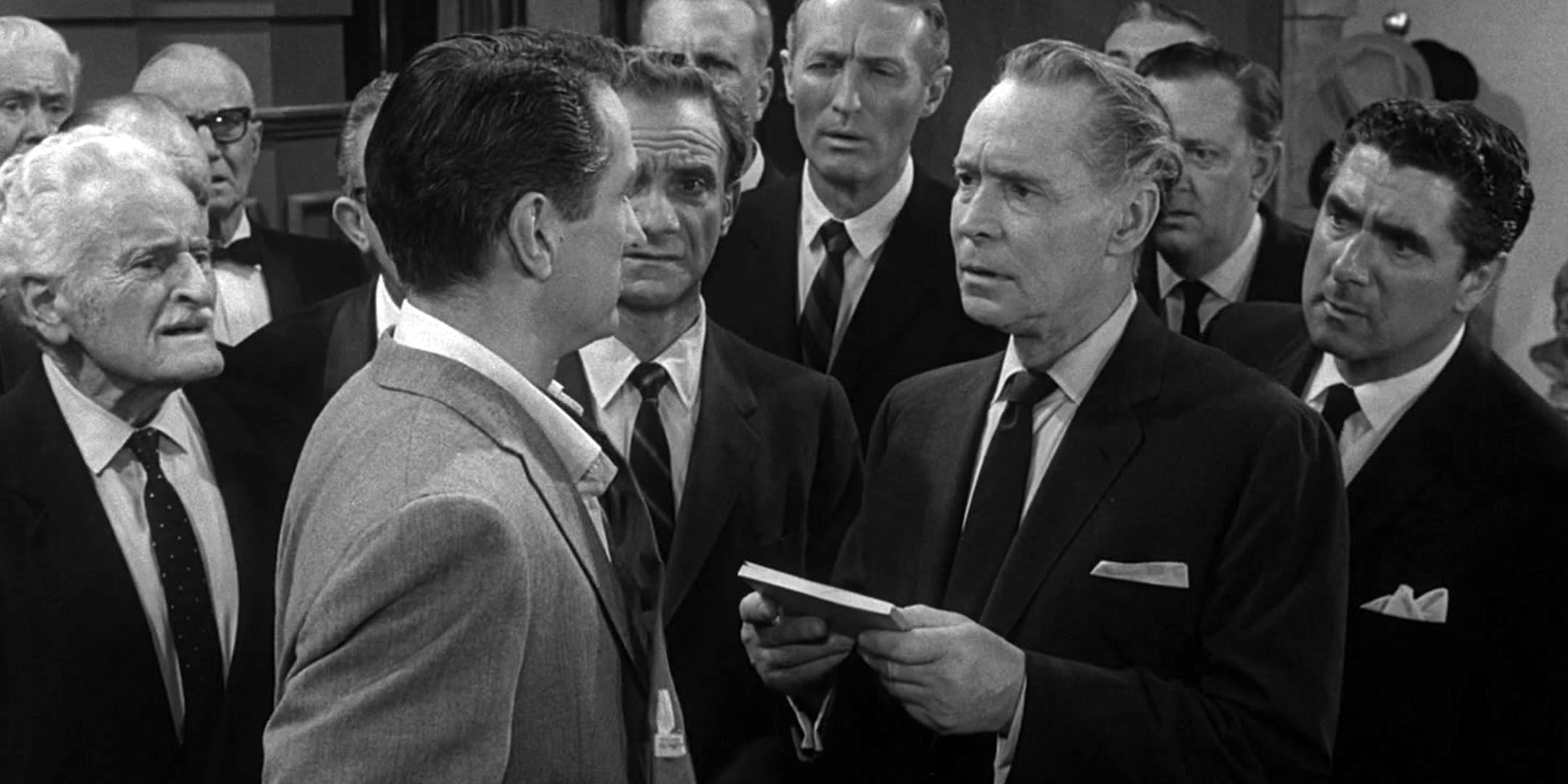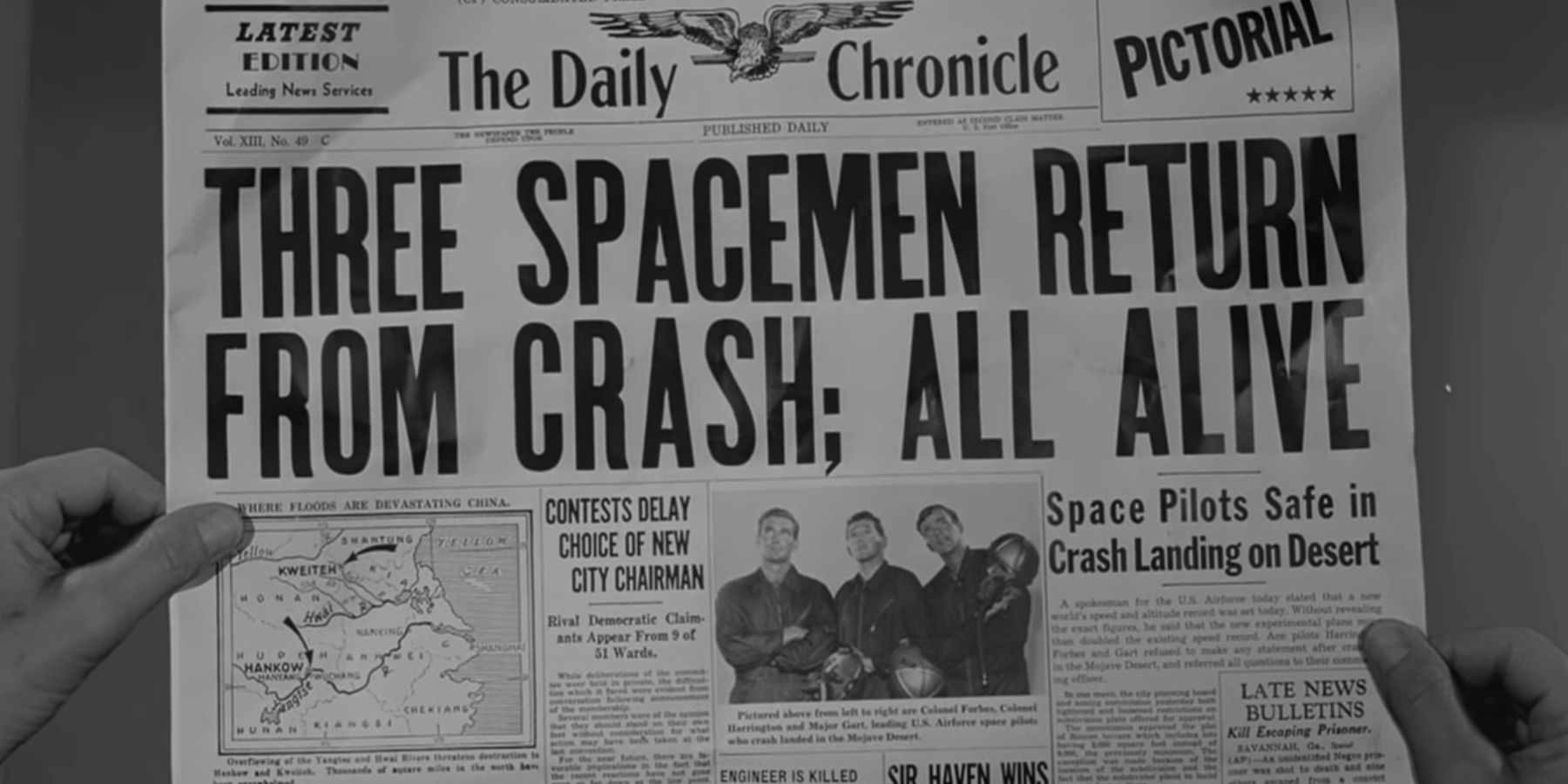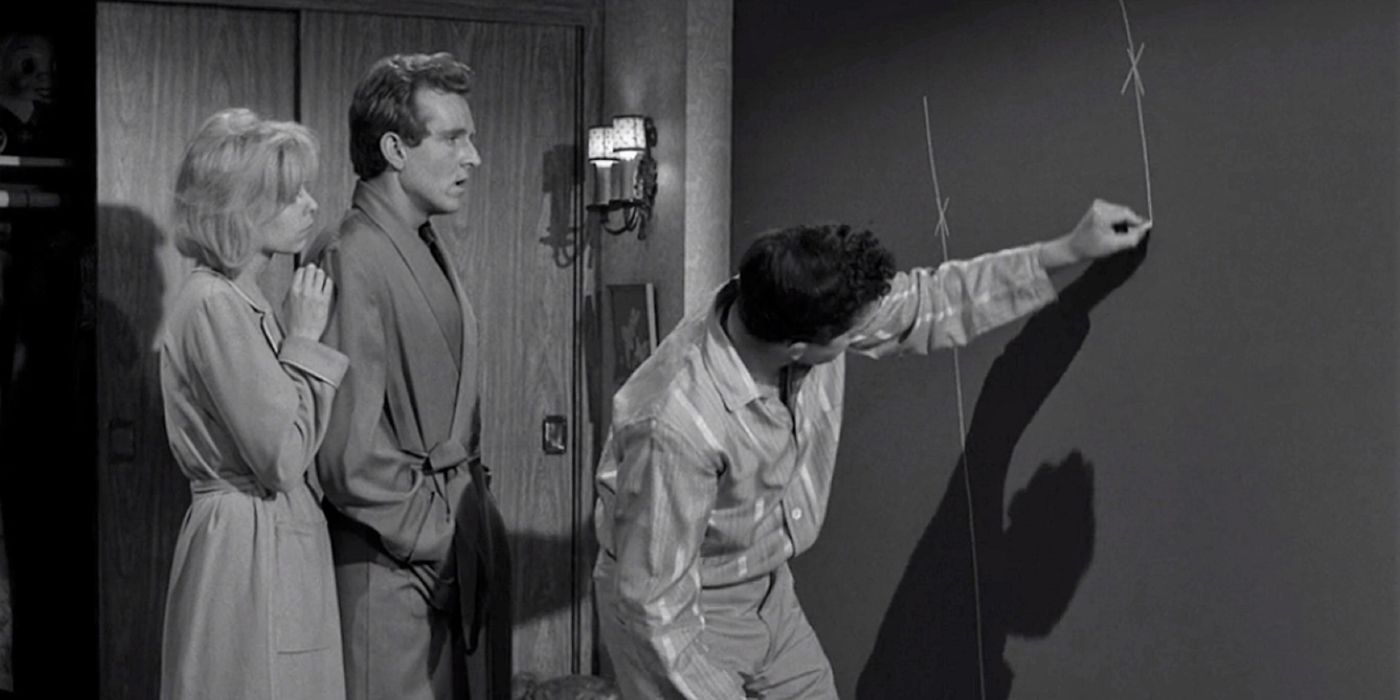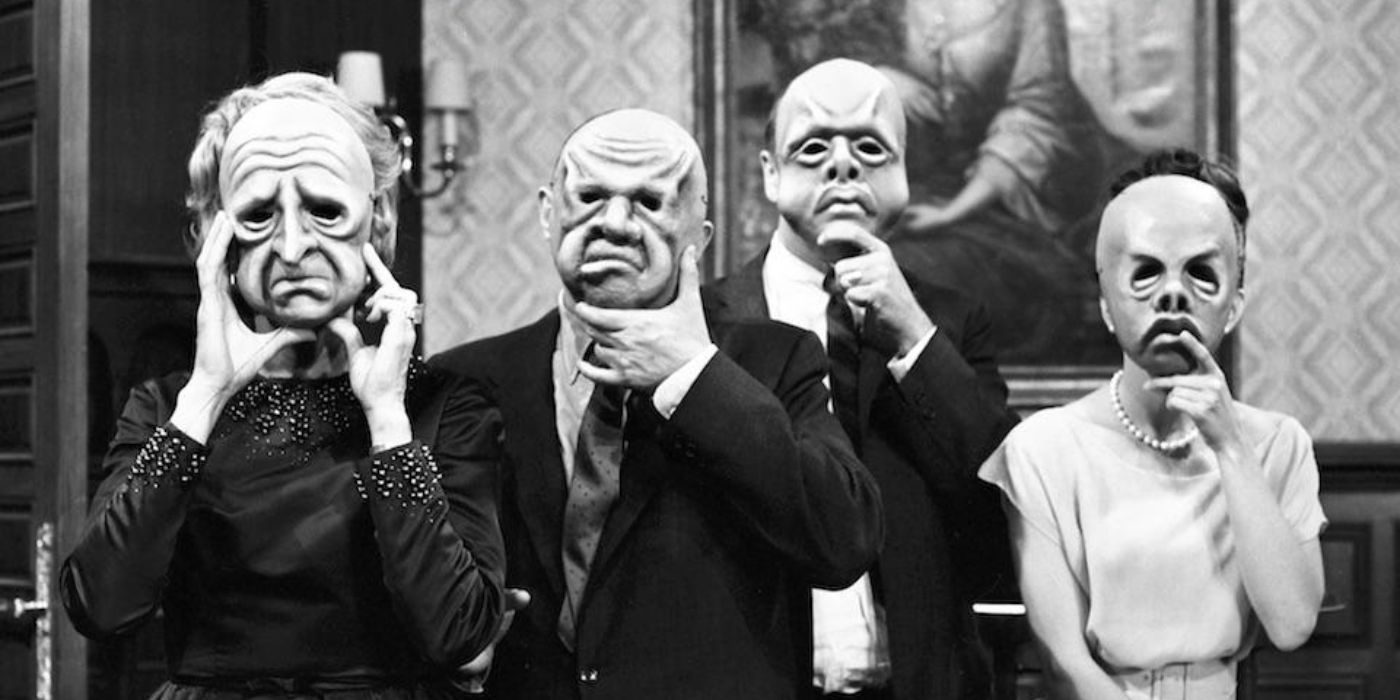The most disturbing episodes of The Twilight Zone leave viewers with haunting impressions that aren’t soon forgotten. Rod Serling’s classic anthology series wrapped social commentary in tales of fantasy and science fiction. Even limited by the technology of its original broadcast era, The Twilight Zone managed to deliver sequences that still disturb viewers today. Later revivals of The Twilight Zone in the 1980s, 2000s, and Jordan Peele’s 2019 The Twilight Zone tried to recapture the initial horror that these original episodes evoked in stark black-and-white, but few retellings have the same impact that Serling’s original did.
The different types of stories in The Twilight Zone are the most disturbing when there’s an eerily familiar twist to what should, on the surface, be an otherworldly tale. Stripped of their fantastical elements, these stories could be about people we know, places we’ve been, and objects we surround ourselves with every day. These Twilight Zone episodes stick in our minds long after we’ve turned off the TV screen because they draw on visceral feelings of horror and dread, awakening something in our guts that we know just isn’t right.
10
Living Doll
The Twilight Zone Season 5, Episode 6
The Twilight Zone has a few episodes about inanimate objects that come to life with a certain vengeance, but “Living Doll” is the most disturbing. The titular doll is Talky Tina, a wind-up doll based on the real-life Chatty Cathy doll from the 1960s. Beginning the story as a gift for a young girl named Christie (Tracy Stratford), Talky Tina becomes a cold-blooded killer with her blinking eyes on Christie’s abusive stepfather, Erich (Telly Savalas). Erich does all he can to rid the house of Talky Tina, but she can’t be stopped.
The actress who lent her voice to the real Chatty Cathy, June Foray, also voices Talky Tina in The Twilight Zone, making “Living Doll” even more disturbing for audiences when it originally aired.
The sweet way that Talky Tina asserts her murderous tendencies is inherently creepy and draws a direct line from “Living Doll” to killer dolls in later productions. From Chucky in Child’s Play to the merely threatening toys in the Toy Story movies, we have modern references to dolls that are secretly plotting our demise when we’re not looking. Even if Chatty Cathy herself has faded to memory, “Living Doll” gives us reason to pause when we look at the toys in our own homes that talk or sing when you push their buttons.
9
The Monsters Are Due on Maple Street
The Twilight Zone Season 1, Episode 22
“The Monsters Are Due On Maple Street” isn’t disturbing because of any shock value or horrifying imagery, but instead because of how surprisingly prescient it is. Although alien involvement is minimal, the story of a community divided by suspicion and hatred feels increasingly more familiar as our own modern world becomes more polarized. The episode’s allegory still stands in for the distrust levied at any number of modern identities. No one is right, everyone is wrong, and the real aliens are not within our communities, but fanning the flames from a higher level.
In the book Stories From The Twilight Zone, “The Monsters Are Due On Maple Street” has an epilogue that reveals everybody killed each other, and the aliens moved in.
The sinking dread in this episode comes not from the actual sci-fi elements—because aliens are responsible for the power outage—but from the ordinary people turning against one another. When anyone could be an alien, distrust is easily sown among members of a community that should be united. “The Monsters Are Due On Maple Street” shows how even well-meaning individuals can get swept up by the tides of circumstance that govern that realm beyond our imaginations. Our convictions don’t make us exempt from outside meddling, but rather, much more vulnerable to it.
8
The Silence
The Twilight Zone Season 2, Episode 25
“The Silence” is one of the most disturbing episodes of The Twilight Zone because of its horrifying, ultimately pointless twist. Surprisingly, there are no sci-fi, fantasy, or horror elements in this episode, which makes it all the more devastating. Instead, there’s just a useless wager between two men: the talkative Jamie Tennyson and the arrogant Colonel Archie Taylor. The Colonel offers Tennyson $500,000 in exchange for one full year of Jamie’s silence, and keeps him in the club to prove it. Tennyson takes the bet, but Taylor keeps trying to get him to call it off.
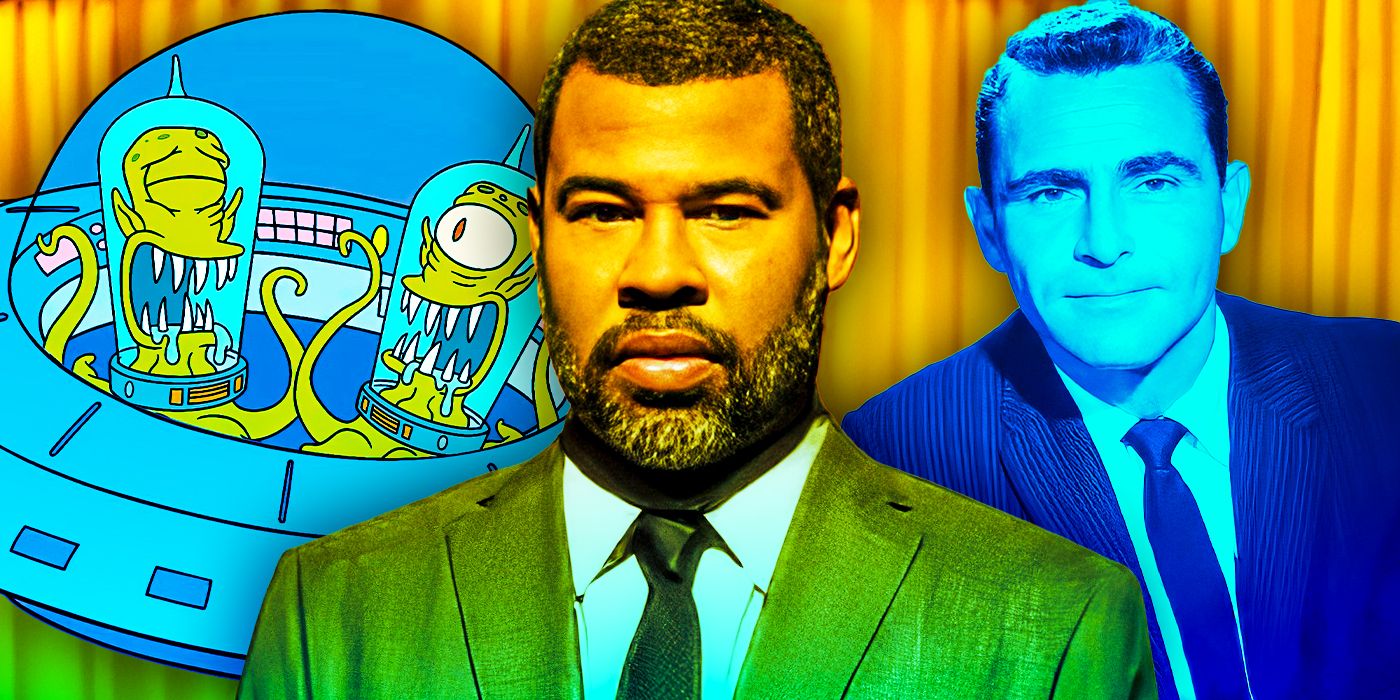
Related
10 Important Ways The Twilight Zone Influenced Movies & TV In The Last 65 Years
Since its release over six decades ago, The Twilight Zone has continued to inspire generations of storytellers thanks to its unique power and appeal.
The shocking end of the episode reveals that Jamie had the nerves in his vocal cords severed in order to win the bet and pay off his massive debts. Worse than that, however, is the fact that Colonel Taylor doesn’t actually have the money; he’s only been posturing at being wealthy this whole time. This chilling ending isn’t just about Tennyson’s desperation driving him to a permanent, horrible solution. It’s also about how there’s no payoff for the lengths that Jamie went to hoping to cash in on a promise that turned out to be hollow.
7
And When the Sky Was Opened
The Twilight Zone Season 1, Episode 11
“And When the Sky Was Opened” zeroes in on the disturbing feeling of not being able to trust one’s own thoughts or memories. After Colonel Gregg Forbes (Rod Taylor), Ed Harrington (Charles Aidman), and Major William Gart (James Hutton) return to Earth following an experimental space flight, Harrington starts to feel like he’s not supposed to be there. Evidence of Harrington’s existence in newspapers and telegrams disappears, with only Forbes remembering that Ed was real—and trying to convince everyone around him that Harrington was part of the X-20’s crew.
It’s Gart’s turn, then, to inherit the madness of remembering a man who doesn’t exist.
The tension mounts as “And When the Sky Was Opened” goes on, and we watch Gregg’s slow unraveling. Only when Forbes confronts Gart, still in a hospital bed, to see if the Major remembers Harrington, does Forbes realize that maybe Harrington was right. Maybe they weren’t supposed to return. It’s Gart’s turn, then, to inherit the madness of remembering a man who doesn’t exist, before he, too, vanishes. This episode isn’t just about Forbes’ psychosis, but the question of whether any of the astronauts were ever real to begin with—and if they were, what actually happened to them?
6
Little Girl Lost
The Twilight Zone Season 3, Episode 26
“Little Girl Lost” is especially disturbing because it centers on a frightened, potentially endangered child: 6-year-old Bettina Miller, who can be heard, but not seen, because she’s slipped between dimensions. Tina doesn’t know what’s happening, and her parents are deeply worried that their daughter might be in real danger. Unlike other episodes of The Twilight Zone that punish bad behavior with disturbing twists of fate, “Little Girl Lost” endangers an innocent child and the family dog by trapping them in “the fourth dimension“, just out of reach of genuinely loving parents.
When Bettina’s father, Chris, takes the risk of stepping through the dimensional portal, “Little Girl Lost” becomes disturbing in a brand-new way. The episode uses experimental filming techniques to show us the trippy, distorted landscape of the fourth dimension, as the images skew and shift, and voices echo. “Little Girl Lost” is disturbing for both children and adults watching: as a child, it’s frightening to think that you can be trapped all alone in another dimension, but as an adult, it’s terrifying to think that children in your care can just vanish, through no fault of your own.
5
Nightmare at 20,000 Feet
The Twilight Zone Season 5, Episode 3
There’s a good reason that “Nightmare at 20,000 Feet” is one of the most well-known and often revisited episodes of The Twilight Zone—and that’s because it’s patently disturbing. Robert Wilson (William Shatner) is already established as being somewhat unstable, so we’re not sure whether to believe him when Wilson spots a gremlin on the wing of the airplane. The creature is both iconic and terrifying, with its not-quite-human face and threatening demeanor. The story is told in such a way that the gremlin could be real, especially with its ambiguous ending implying that Wilson wasn’t actually imagining it.
|
Remakes of “Nightmare at 20,000 Feet” |
|||
|---|---|---|---|
|
Version Title |
Episode |
Starring |
Year Made |
|
“Nightmare at 20,000 Feet” |
Season 5, Episode 3 |
William Shatner |
1963 |
|
“Nightmare at 20,000 Feet” |
The Twilight Zone movie |
John Lithgow |
1983 |
|
“Nightmare at 30,000 Feet” |
Season 1, episode 2 |
Adam Scott |
2019 |
“Nightmare at 20,000 Feet” is such a memorable episode of The Twilight Zone because it captures the fear of flying with a near-perfect metaphor of the gremlin. This story externalizes paranoia into an actual creature that we can be afraid of, and gives it a disturbing face—one that many of us still hope we don’t see when we look outside our own airplane windows. The visceral reactions of a pre-Star Trek William Shatner make the gremlin even more real, cheesy though it may seem today.
4
The Masks
The Twilight Zone Season 5, Episode 25
In “The Masks”, aristocrat Jason Foster invites his daughter and her family, the Harpers, to Foster’s home to celebrate one last Mardi Gras before his death. As part of this last request, Foster asks his family members to don grotesque masks that are meant to represent their worst inner features. They have to wear the masks until midnight in order to claim their inheritance, but when midnight arrives, and they take the masks off, the Harper family’s own faces have been permanently altered to look just like the masks they were wearing.
The actual masks and the prosthetic makeup designs for “The Masks” were designed by MGM makeup artist William Tuttle, who would later win an Oscar.
The makeup design of “The Masks” instills a very specific kind of body horror that makes it a particularly disturbing episode of The Twilight Zone. The masks themselves are soulless and eyeless, but when the Harpers take the masks off, it’s clear that they’re still looking out from within these twisted faces. It’s horrifying to think that the Harpers are stuck with their new, very real, very grotesque faces permanently, even if they are well-deserved punishment for actually terrible behavior. They may get their inheritances, but was it worth it?
3
Number 12 Looks Just Like You
The Twilight Zone Season 5, Episode 17
In “Number 12 Looks Just Like You”, the Transformation is a futuristic coming-of-age ritual where teenagers choose new selves from a limited catalog of acceptable models, with the benefits of slowed aging and immunity to diseases. Marilyn (Collin Wilcox) is the last of her peer group to undergo the procedure, because she’s certain that doing so will rob her of humanity, and she’s right—because it’s not just bodies that are homogenized in the Transformation, but personalities, too. Marilyn vehemently argues against the Transformation, but her doctor eventually forces it on her.
The selection of potential bodies is so limited that all adults in “Number 12 Looks Just Like You” are played by just two actors: Suzy Parker and Richard Long, who wear name tags to indicate when they’re different characters.
The horror in “Number 12 Looks Just Like You” is laced throughout the episode, as adults push conformity on a willful young woman, but is strongest at the very end, when Marilyn emerges from the Transformation grinning wholesomely. Marilyn is happy that every trace of her individuality is erased, and elated to be in the same model of body as her best friend Valerie. The hopelessness of this uniform society is disturbing not just because of its conformity, but also because people lack agency and bodily autonomy. The real Marilyn is gone forever, never to return.
2
Eye of the Beholder
The Twilight Zone Season 2, Episode 6
“Eye of the Beholder” combines the body horror and makeup effects of “The Masks” with the forced conformity of “Number Twelve Looks Just Like You” to create a truly disturbing episode of The Twilight Zone. In it, Janet Tyler is a young woman whose face is obscured by bandages following another unsuccessful attempt to correct her facial disfigurement. The faces of the hospital staff are also hidden by camera angles and lighting tricks, keeping the truth of the story a secret until the reveal that Janet is conventionally attractive, while everyone else’s faces are grotesque.

Related
The Twilight Zone Never Topped This Season 2 Episode That Only Got Better With Time
It’s impossible to overstate how many episodes of The Twilight Zone are iconic, but one stands out as the absoulte best – and it came in season 2.
As an episode of The Twilight Zone everyone should watch, “Eye of the Beholder” is unsettling enough on its own, because the story doesn’t rely on its twist to be disturbing. It’s still frightening even when you already know exactly where it’s going. Douglas Heyes directs “Eye of the Beholder” with a suspense that builds slowly and keeps us speculating, as the story is told through uncanny, disembodied voices and tense angles. The ending sees Janet exiled to live with others like her, framing it as a positive, but in actuality, it’s a sobering commentary on segregating communities.
1
It’s A Good Life
The Twilight Zone Season 3, Episode 8
“It’s A Good Life” twists the familiar images of rural life and childhood innocence into a deeply disturbing story which is also one of the best episodes of The Twilight Zone. Little Anthony Fremont (Billy Mumy) has a chokehold on the people of Peaksville, Ohio, thanks to his inexplicable, godlike powers. Anthony creates a world that suits his cruel child’s perspective, where he glorifies violence and isolates the town from the outside. As resources dwindle, people will certainly die, but Anthony’s ability to disappear people he doesn’t like “to the cornfield” makes it impossible for anyone to safely defy him.
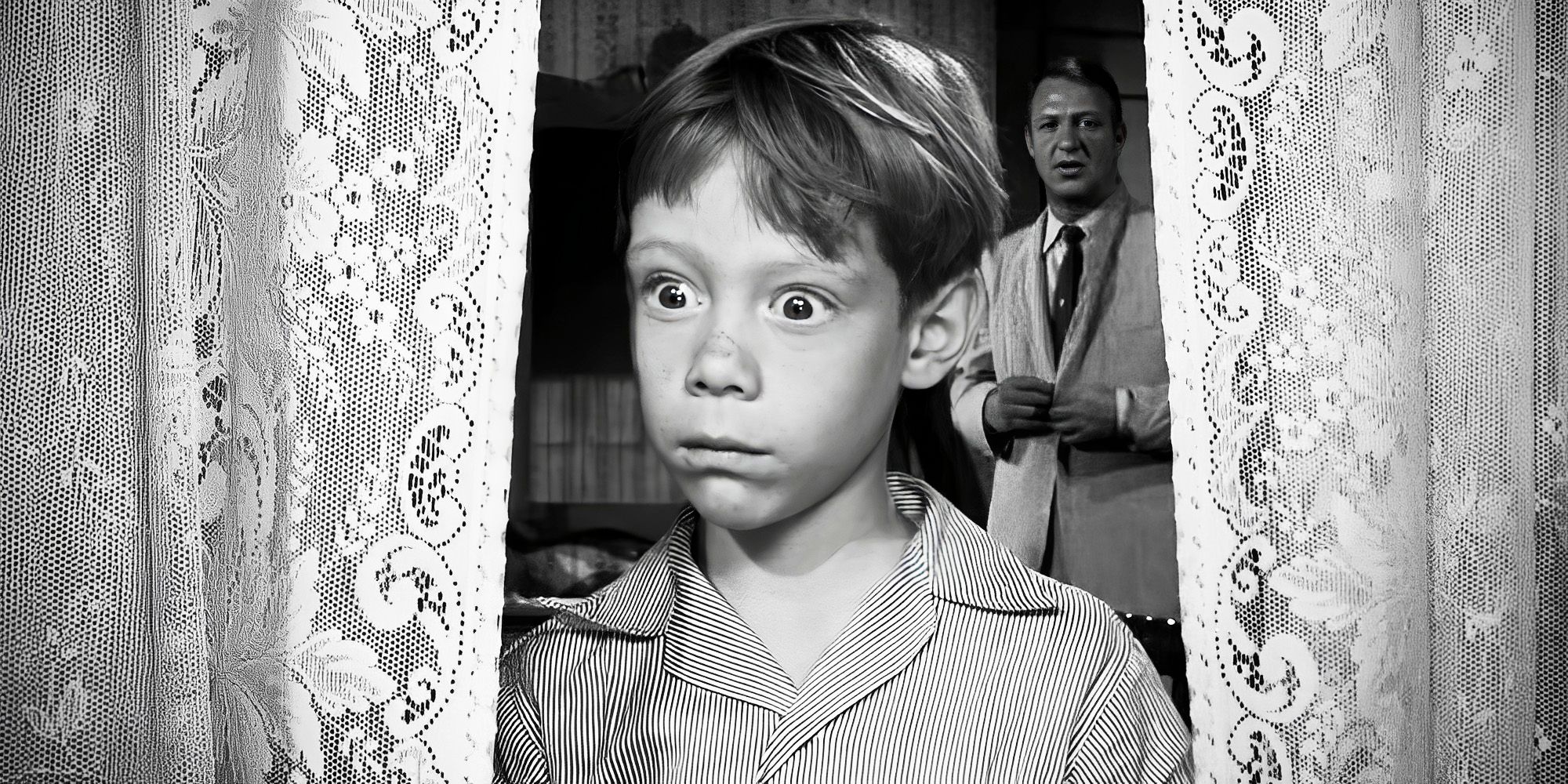
Related
Only 1 Episode Of The Twilight Zone Ever Got A Sequel, And It’s Still One Of The Franchise’s Creepiest Stories 64 Years Later
One classic Twilight Zone episode is the only one to have ever gotten a sequel, and it continues to be one of the show’s scariest stories.
There’s no doubt that “It’s A Good Life” is disturbing for the way that Anthony rules his tiny world as its laughing dictator, but the episode also has its fair share of disturbing imagery. When his family’s neighbor Dan (Don Keefer) has the courage to stand up to Anthony, calling him a monster to his face, Anthony doesn’t just make Dan disappear. The camera cuts to a shadow of a jack-in-the-box on the wall, implying that Dan has been horribly transformed into something inhuman. It’s the kind of episode of The Twilight Zone that creates nightmares to drive home its point.
